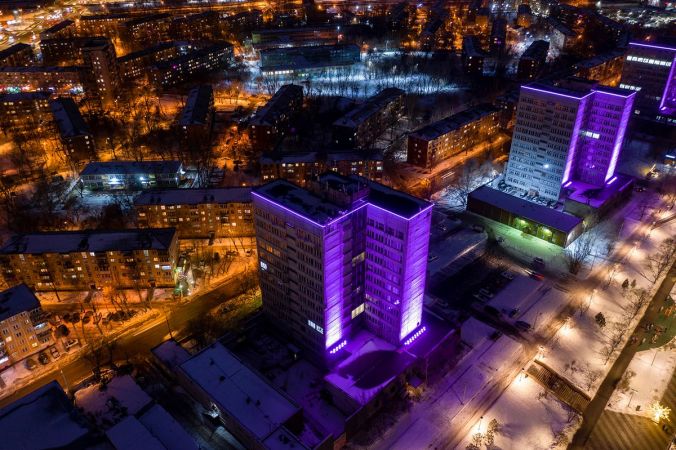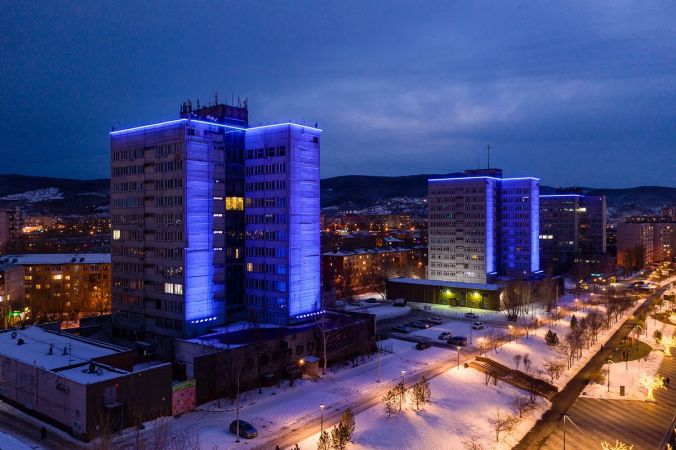Integrated lighting of administrative buildings on Gladkov Street
-
installation:EnerGo Engineering
-
supply:EnerGo Engineering














About the project
The buildings on Gladkov Street under numbers 4, 6 and 8 are purely administrative. From the world architecture point of view, these buildings have no remarkable features. The traditional heritage of Soviet urban planning modestly and firmly endured through time at the bank of the Yenisei up to the moment when INTILED lighting designers together with the EnerGo Engineering company decided to add some color to the portrait of the area.
Lighting concept and goals
The location, height and identity of the buildings form an architectural rhythm. The idea behind the concept was to emphasize this rhythm and evenly illuminate the façades with expressive and complex shades. A simple idea led to a spectacular result; the buildings have become a bright point in the exposition of the entire riverfront.
Project implementation
The architecture of the facility and its location in the historical part of the city led INTILED lighting designers to choose the same 3000K colour temperature for all fixtures. For the ground floor lighting, IntiGROUND luminaries were used to provide a uniform lighting effect without burns. Wall grazing flood lighting on floors 1-3 and 6-7 was created by IntiLINE luminaires. IntiLINE luminaires also highlight certain elements of the building: cornices and bas-reliefs. The main part of the residence is illuminated by IntiSTARK spotlights placed on poles, while the entrance area and the rustication of window openings are emphasized by IntiGROUND-midi.
Control System
All luminaires are controlled through the LIGHTCAD software. The main difficulty of the project was the requirement to create a single lighting scenario for all buildings. This task was solved by connecting all the fixtures to one controller using a fiber-optic link to ensure the signal transmission over a long distance. The process of writing lighting scenarios was assisted by LIGHTCAD realistic visualization and working closely with the dealer who was always present at the site and gave real-time instructions on correcting particular effects. In total, more than ten intermediate versions of the scenarios were made before we found a scenario that suited everyone.

